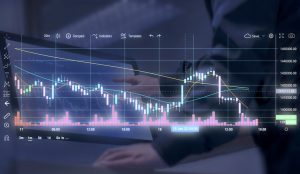Futures trading is a dynamic and complex field that offers numerous strategies to accommodate different trading styles and objectives. Futures traders must understand the various approaches and tools available to them to make informed decisions and optimize their trading performance. This article provides a detailed exploration of several key trading strategies and concepts in futures trading, including swing trading, momentum trading, calendar spread futures trading, butterfly spread, high-frequency futures trading, crack spread, statistical arbitrage, and the impact of low margin rates on futures trading.

1. Swing Trading in Futures
Definition and Overview
Swing trading is a popular trading strategy in the futures market that involves holding positions for several days or even weeks to capitalize on short- to medium-term price movements. Unlike day trading, where positions are closed within the same trading day, swing traders aim to capture the “swings” in the market—short-term price fluctuations caused by market volatility.
How Swing Trading Works
Swing traders typically use technical analysis to identify potential entry and exit points. They look for patterns such as head and shoulders, flags, and triangles to predict price movements. Swing traders may also use indicators like moving averages, RSI (Relative Strength Index), and MACD (Moving Average Convergence Divergence) to confirm their predictions.
The key to successful swing trading lies in timing. Traders must be able to accurately predict when a trend will start and end, which requires a deep understanding of market dynamics and the ability to interpret chart patterns.
Advantages of Swing Trading
- Flexibility: Swing trading allows traders to maintain a regular job or pursue other interests because it does not require constant monitoring of the markets.
- Lower Transaction Costs: Since positions are held for longer periods compared to day trading, swing traders incur fewer transaction costs.
- Potential for High Returns: By capturing significant price movements, swing traders can achieve substantial returns over time.
Disadvantages of Swing Trading
- Overnight Risk: Holding positions overnight exposes swing traders to risks from unexpected market events, such as geopolitical developments or economic announcements, that can lead to significant price gaps.
- Requires Patience: Swing trading requires patience, as traders must wait for the right market conditions to enter and exit trades.
Best Practices for Swing Trading
- Use Stop-Loss Orders: To manage risk, swing traders should always use stop-loss orders to limit potential losses.
- Stay Informed: Swing traders must stay informed about market news and events that could impact their positions.
- Focus on Liquid Markets: Trading in highly liquid futures markets ensures that positions can be easily entered and exited without significant price slippage.
2. Momentum Trading in Futures
Definition and Overview
Momentum trading is a strategy based on the idea that assets that have been performing well will continue to do so in the near future, while assets that have been underperforming will continue to decline. Momentum traders aim to capitalize on the continuation of existing trends by entering trades in the direction of the momentum.
How Momentum Trading Works
Momentum traders use technical indicators like the Moving Average Convergence Divergence (MACD), Relative Strength Index (RSI), and the Momentum Indicator to identify trends and assess their strength. Once a trend is identified, momentum traders enter positions in the direction of the trend, holding the position until signs of a reversal or a slowdown in momentum appear.
Advantages of Momentum Trading
- Potential for Quick Profits: Momentum trading can generate quick profits if the trader accurately identifies and capitalizes on strong trends.
- Clear Entry and Exit Signals: Momentum indicators provide clear signals for entering and exiting trades, making the strategy easier to implement for traders who are skilled in technical analysis.
Disadvantages of Momentum Trading
- High Risk of Reversals: Momentum trading carries the risk of sudden trend reversals, which can result in significant losses if the trader is not quick to react.
- Requires Constant Monitoring: Momentum traders need to closely monitor the market to act swiftly when trends begin to reverse.
Best Practices for Momentum Trading
- Trade in Active Markets: Momentum trading works best in highly active markets where trends are strong and persistent.
- Use Multiple Indicators: Relying on a combination of momentum indicators can help traders confirm trends and reduce the risk of false signals.
- Set Tight Stop-Losses: To manage risk, momentum traders should set tight stop-losses to protect against sudden reversals.
3. Calendar Spread Futures Trading
Definition and Overview
Calendar spread futures trading, also known as a time spread or horizontal spread, involves simultaneously buying and selling futures contracts on the same underlying asset but with different expiration dates. This strategy is used to profit from changes in the price difference (spread) between the two contracts.
How Calendar Spread Trading Works
In a calendar spread, the trader typically buys a futures contract with a longer expiration date and sells a futures contract with a shorter expiration date, or vice versa. The idea is to profit from the change in the spread between the two contracts as market conditions evolve. The spread can widen or narrow based on factors such as supply and demand, seasonality, or changes in market sentiment.
Advantages of Calendar Spread Trading
- Reduced Risk: Calendar spreads generally have lower risk compared to outright futures positions because the trader is exposed to the price difference between the two contracts rather than the full price movement of the underlying asset.
- Lower Margin Requirements: Because the risk is lower, margin requirements for calendar spreads are typically lower than for outright futures positions.
Disadvantages of Calendar Spread Trading
- Complexity: Calendar spreads can be more complex to manage than simple long or short futures positions, as traders need to understand the factors that influence the spread.
- Limited Profit Potential: The profit potential in calendar spread trading is generally lower than in outright futures trading because the price movement of the spread is typically smaller than the movement of the underlying asset.
Best Practices for Calendar Spread Trading
- Monitor Market Conditions: Traders need to stay informed about market conditions that can affect the spread, such as changes in supply and demand or seasonal trends.
- Use Technical Analysis: Technical analysis can help traders identify opportunities in calendar spreads by analyzing historical spread patterns.
4. Butterfly Spread in Futures Trading
Definition and Overview
A butterfly spread is a neutral options strategy that combines a bull spread and a bear spread. It involves buying and selling options with three different strike prices but with the same expiration date. In futures trading, a similar strategy can be applied using futures contracts.
How Butterfly Spread Trading Works
A typical butterfly spread in futures trading might involve buying one futures contract at a lower price, selling two contracts at a middle price, and buying one contract at a higher price. The goal is to profit from the price of the underlying asset remaining close to the middle strike price at expiration. The strategy profits if the underlying asset’s price is close to the middle strike price and losses are minimized if the price moves significantly in either direction.
Advantages of Butterfly Spread Trading
- Limited Risk: The maximum loss is limited to the initial cost of setting up the spread.
- Potential for High Reward: If the market price ends up near the middle strike price, the potential reward can be high relative to the risk.
Disadvantages of Butterfly Spread Trading
- Limited Profit Potential: While the risk is limited, so is the profit potential, which is capped by the distance between the middle and outer strike prices.
- Requires Precise Market Prediction: To profit from a butterfly spread, the trader must accurately predict that the market will remain within a narrow price range.
Best Practices for Butterfly Spread Trading
- Use in Low Volatility Markets: Butterfly spreads work best in markets where volatility is low and prices are expected to remain stable.
- Monitor Implied Volatility: Changes in implied volatility can affect the pricing of the options or futures contracts used in the butterfly spread, so traders should keep an eye on volatility levels.
5. High-Frequency Futures Trading
Definition and Overview
High-frequency trading (HFT) is a type of algorithmic trading characterized by the use of powerful computers to execute a large number of orders at extremely high speeds. In futures trading, HFT involves placing and executing orders within fractions of a second to take advantage of small price discrepancies in the market.
How High-Frequency Trading Works
HFT firms use sophisticated algorithms to analyze market data and execute trades at lightning speeds. These algorithms are designed to identify and exploit inefficiencies in the market, such as temporary price discrepancies between different exchanges or financial instruments. The profits per trade are usually very small, but the high volume of trades can result in significant overall profits.
Advantages of High-Frequency Trading
- High Profit Potential: HFT can generate significant profits due to the sheer volume of trades executed.
- Market Efficiency: HFT contributes to market efficiency by quickly correcting price discrepancies.
Disadvantages of High-Frequency Trading
- Requires Advanced Technology: HFT requires significant investment in technology and infrastructure, including powerful computers and high-speed internet connections.
- High Risk: The high speed and volume of trades mean that small errors in the algorithm can lead to substantial losses.
Best Practices for High-Frequency Trading
- Develop Robust Algorithms: The success of HFT depends on the quality of the algorithms used, so it’s essential to invest in the development and testing of robust trading algorithms.
- Monitor Latency: In HFT, even milliseconds can make a difference, so traders need to minimize latency in their trading systems.
6. Crack Spread in Futures Trading
Definition and Overview
The crack spread is a trading strategy used in the energy markets, particularly in oil and gas futures. It involves taking positions in the futures of crude oil and refined products like gasoline and heating oil to profit from the price difference (spread) between crude oil and its refined products.
How Crack Spread Trading Works
A typical crack spread trade involves buying or selling crude oil futures while simultaneously selling or buying futures contracts for refined products. The trader profits from changes in the spread between the price of crude oil and the prices of its refined products. For example, if the price of gasoline increases relative to crude oil, the spread widens, and a trader holding a long crack spread position would profit.
Advantages of Crack Spread Trading
- Hedge Against Refining Margins: For companies involved in refining, the crack spread can serve as a hedge against fluctuations in refining margins.
- Speculative Opportunities: Traders can speculate on the future direction of the spread based on factors such as seasonal demand, refinery outages, and changes in crude oil supply.
Disadvantages of Crack Spread Trading
- Complexity: Understanding the relationship between crude oil and its refined products requires specialized knowledge of the energy markets.
- Volatility: The crack spread can be highly volatile, leading to significant risks if not managed properly.
Best Practices for Crack Spread Trading
- Stay Informed About the Energy Markets: Traders need to be aware of factors that can affect the supply and demand for crude oil and refined products, such as geopolitical events, weather patterns, and refinery capacity.
- Use Risk Management Tools: Given the volatility of the crack spread, it’s essential to use risk management tools like stop-loss orders to protect against adverse price movements.
7. Statistical Arbitrage in Futures Trading
Definition and Overview
Statistical arbitrage (stat arb) is a trading strategy that uses mathematical models to identify and exploit price inefficiencies in the market. In futures trading, statistical arbitrage involves trading pairs or groups of futures contracts that have historically shown a statistical relationship, with the expectation that any deviations from this relationship will eventually revert to the mean.
How Statistical Arbitrage Works
Stat arb traders use historical price data and statistical models to identify pairs of futures contracts that are expected to move together. When the price of one contract deviates from its expected relationship with the other, the trader takes a long position in the undervalued contract and a short position in the overvalued contract. The positions are then held until the prices converge, at which point the trader closes the positions for a profit.
Advantages of Statistical Arbitrage
- Market Neutrality: Because statistical arbitrage involves taking both long and short positions, it is generally market-neutral, meaning it is less affected by overall market direction.
- Diversification: Statistical arbitrage strategies can be applied across multiple asset classes, providing opportunities for diversification.
Disadvantages of Statistical Arbitrage
- Requires Advanced Analytical Skills: Implementing a statistical arbitrage strategy requires a deep understanding of statistical methods and access to large datasets.
- Execution Risk: The success of statistical arbitrage depends on the accurate execution of trades, and small delays or errors can lead to losses.
Best Practices for Statistical Arbitrage
- Use Robust Statistical Models: The key to successful stat arb trading is the accuracy of the statistical models used to identify trading opportunities.
- Continuously Monitor Positions: Market conditions can change rapidly, so it’s important to continuously monitor positions and adjust the strategy as needed.
8. What Low Margin Rates on Futures Means for Your Trading
Definition and Overview
Margin is the amount of money required to open and maintain a futures position. It acts as a good faith deposit to ensure that the trader can cover potential losses. Low margin rates mean that traders need to put up less capital to control a larger position in the futures market.
Impact of Low Margin Rates on Futures Trading
Low margin rates can have a significant impact on futures trading by increasing leverage. With lower margins, traders can control larger positions with a smaller initial investment, which can amplify both potential profits and potential losses.
Advantages of Low Margin Rates
- Increased Leverage: Lower margin requirements allow traders to leverage their capital more effectively, potentially leading to higher returns on investment.
- Greater Market Access: Lower margins make futures trading accessible to a wider range of traders, including those with smaller account balances.
Disadvantages of Low Margin Rates
- Higher Risk: While low margin rates increase potential profits, they also increase the risk of substantial losses. Traders need to be careful not to over-leverage their positions.
- Margin Calls: If the market moves against a highly leveraged position, traders may face margin calls, requiring them to deposit additional funds or liquidate positions at a loss.
Best Practices for Trading with Low Margin Rates
- Manage Leverage Carefully: Traders should be cautious about over-leveraging their positions and should always have a clear risk management plan in place.
- Use Stop-Loss Orders: To protect against large losses, traders should use stop-loss orders to automatically close positions if the market moves against them.
Futures trading offers a wide array of strategies and approaches, each with its own set of advantages and challenges. Whether you are engaging in swing trading, momentum trading, calendar spread trading, or any of the other strategies discussed, it is crucial to have a deep understanding of the market dynamics and to implement effective risk management practices. Additionally, the impact of low margin rates cannot be overstated, as they can significantly influence the risk and return profile of your trading activities.
By mastering these strategies and understanding the underlying concepts, futures traders can better navigate the complexities of the market and increase their chances of success. Each strategy requires a unique set of skills and knowledge, and the choice of strategy should align with the trader’s individual goals, risk tolerance, and market outlook.
For more information, click here.
Ready to start trading futures? Call us at 1(800)454-9572 (US) or (310)859-9572 (International), or email info@cannontrading.com to speak with one of our experienced, Series-3 licensed futures brokers and begin your futures trading journey with E-Futures.com today.
Disclaimer: Trading Futures, Options on Futures, and retail off-exchange foreign currency transactions involve substantial risk of loss and are not suitable for all investors. Past performance is not indicative of future results. Carefully consider if trading is suitable for you in light of your circumstances, knowledge, and financial resources. You may lose all or more of your initial investment. Opinions, market data, and recommendations are subject to change at any time.
Important: Trading commodity futures and options involves a substantial risk of loss. The recommendations contained in this article are opinions only and do not guarantee any profits. This article is for educational purposes. Past performances are not necessarily indicative of future results.
This article has been generated with the help of AI Technology and modified for accuracy and compliance.
Follow us on all socials: @cannontrading









































